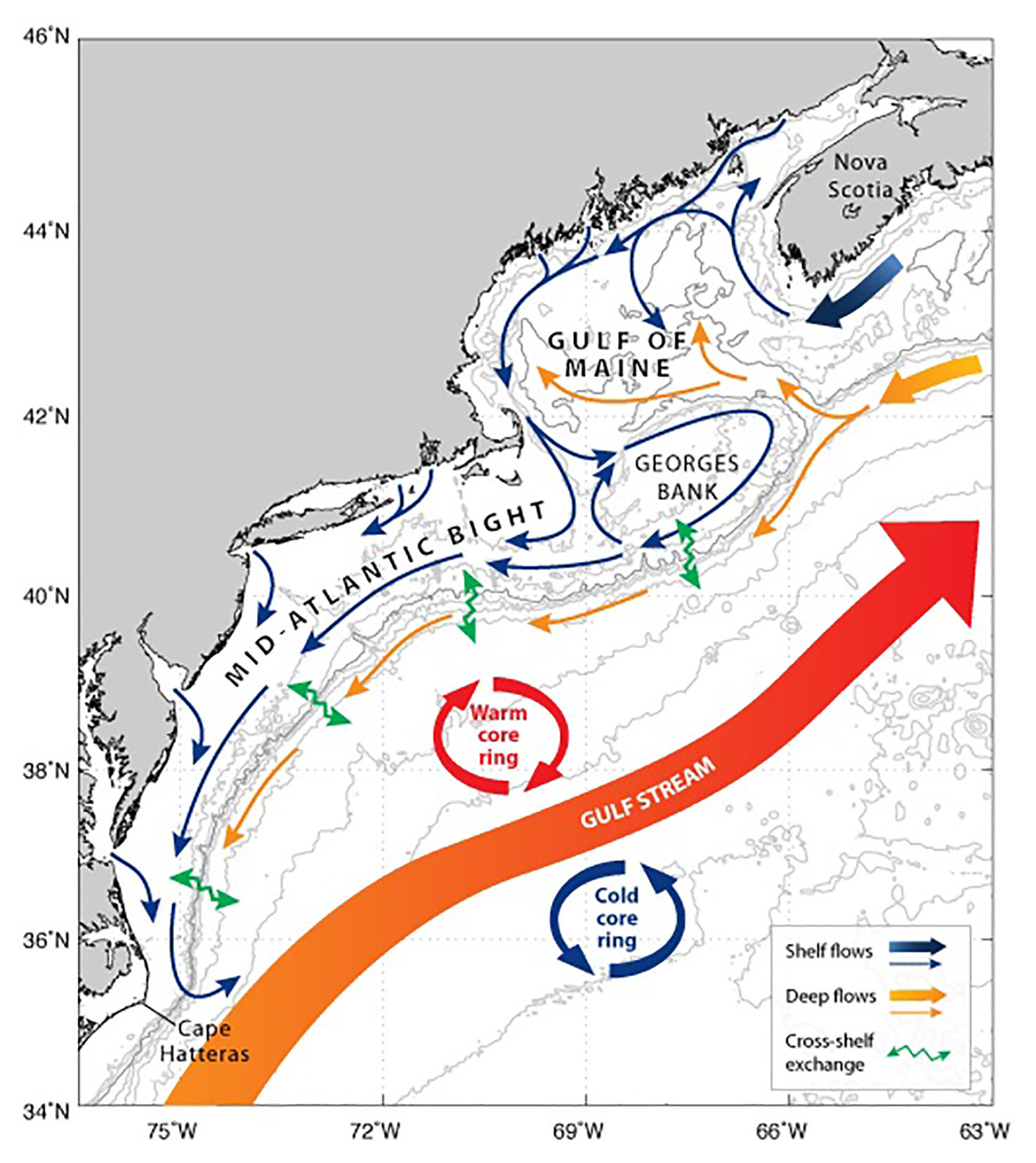The CINAR Region
The Northeast U.S. Shelf Large Marine Ecosystem (NES LME) is a biologically diverse and highly productive region extending from Nova Scotia to Cape Hatteras, encompassing the Gulf of Maine (GoM), Georges Bank, the Southern New England shelf, and the Mid-Atlantic Bight (MAB). The LME supports rich fisheries that for centuries have shaped the culture and economies of communities throughout the region. Commercial fisheries are valued at over $1.5 billion per year and include finfish, lobster, shrimp, scallops, and many other species. Protected species of fish, whales, sea turtles, and seabirds spend portions of their life in the LME. Notably, the principal feeding grounds for the northern right whale, one of the world’s most endangered large whale species, are located in the LME and all endangered Atlantic salmon in the US spawn in rivers connected to the LME and transit through the region.
The LME is currently undergoing environmental changes to a degree not experienced by most other coastal regions in the U.S. It is challenged by coastal development and associated habitat destruction, depletion of fishery stocks and reduced productivity and stability, and inputs of nutrients and pollutants. Of the diverse impacts to the NES LME, none have the potential to shape the composition and productivity of this ecosystem more than climate change. Over the past fifteen years, the region has warmed steadily and at a remarkable rate, exceeding that of 99.9% of the global ocean. Few marine ecosystems have experienced the decadal warming that has occurred in GoM. The ecological and economic significance of these warming trends have yet to be fully realized, underscoring the need for innovative and integrated approaches to describing and understanding the biological and physical parameters influencing these processes, and interdisciplinary approaches to species recovery and management that integrate human dimensions while supporting science based decision making. These are focal points of the new CINAR. The health of this region’s ecosystem and the biodiversity, economies, and communities it supports will be determined by the success of these strategies.

